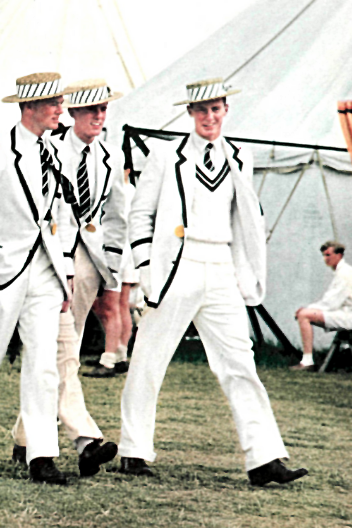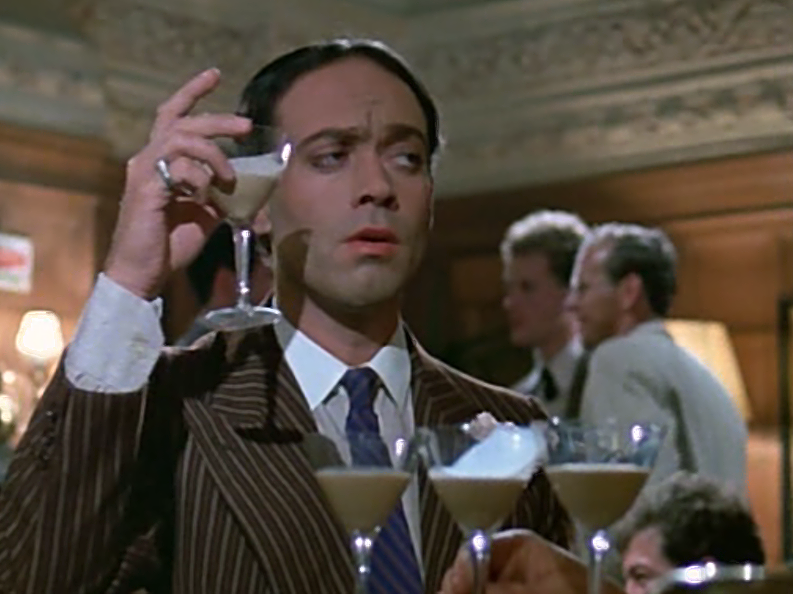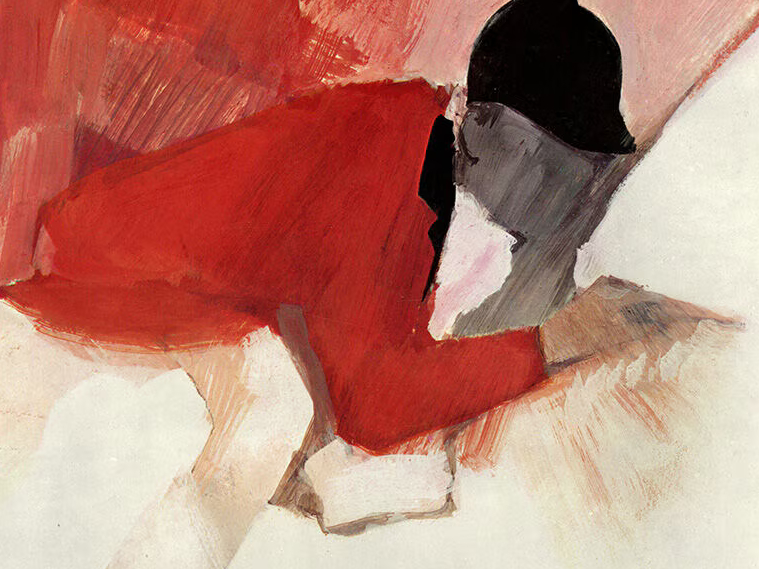For centuries, cocktails have been a key part of European social rituals. From the refreshing wake-up tang of a breakfast Buck’s Fizz, to the sophisticated sip of an evening martini, the right cocktail can set the mood for any time of the day.
In this article, we’ll explore our favourite picks for every hour, offering the perfect pour to match each moment.
The first cocktail
While the modern cocktail has its roots in the early 19th century, the practice of mixing drinks is much older. If you look back far enough, the Greeks and Romans mixed their wines with spices and other flavourings. However, the term “cocktail” entered common usage as a mixed alcoholic drink in the early 19th century.
But why cocktail? One theory suggests it derives from the English cock ale or cock’d ale, popular in the 17th century. This was ale brewed with chicken, fruit, and spices, then bottled. Etymologically, it sounds plausible. Another theory involves horses with cocked tails, indicating a mixture of breeds.
Romans soldiers out conquering weaker peoples would drink a mixture of wine, vinegar, and herbs called posca. The drink was made from mixing sour wine or wine vinegar with water and adding herbs or spices to improve the flavour. It was valued for its refreshing qualities and its ability to prevent waterborne illnesses, thanks to the acidity of the vinegar. Posca is believed to be the last drink offered to Jesus on the cross by a Roman legionnaire.
Cocktails for breakfast
- Bucks Fizz:Champagne and orange juice
- Bloody Mary: Vodka, tomato juice, salt, pepper, Tabasco or cayenne pepper, Worcestershire sauce, and lemon juice
The introduction of breakfast cocktails in late-19th- to early-20th-century England and its colonies coincided with dining becoming a more sophisticated and deliberate experience, especially among the upper classes. The Victorian and Edwardian eras were marked by elaborate breakfast spreads, which often included light alcoholic beverages such as champagne or sherry.
The Buck’s Fizz, created in 1921 at London’s Buck’s Club, was introduced as a celebratory breakfast drink and a way to enjoy champagne at breakfast or brunch without its full potency. The classic Buck’s Fizz is simplicity itself: fill a champagne flute with one measure of orange juice, then top up with two measures of chilled champagne. It has always been synonymous with celebration. With the addition of fruit juice, it feels almost like a morning tonic. Indispensable at weddings, holiday brunches, and other festive morning gatherings, the Buck’s Fizz is best enjoyed in the soft morning light on a garden patio in Somerset, where the air is fresh, the birds are singing, and the day is young.
Old Lord Anglo might well have served a restorative Bloody Mary for breakfast at his country seat between the wars. In the 1930s, Fernand Petiot—then a New York bartender at the St. Regis—refined the use of vodka mixed with tomato juice into the Bloody Mary known today: vodka, tomato juice, salt, pepper, Tabasco or cayenne pepper, Worcestershire sauce, and lemon juice, shaken and strained into an ice-filled glass. Often cited as a hangover cure, its revivifying properties are attributed to the vitamins in the tomato juice and the kick from the spices and alcohol, which can help alleviate the sturdiest of hangover symptoms.
Cocktails for lunch
- Aperol Spritz: Aperol, prosecco, splash of soda water
- Pimm’s Cup: Pimm’s No. 1, lemonade, fresh fruit
- Hot Toddy: Whiskey, hot water, honey, lemon, spices
- Mulled Wine: Red wine warmed through with winter spices
Lunch cocktails provide a sociable pause in the day when waiting for dinner is simply too much of a stretch.
As with many civilized things in this world—long may we retain them—summer lunch cocktails present a choice between the Anglo and Italian approaches. An Aperol Spritz or Pimm’s Cup is ideal for garden parties, picnics, and casual outdoor gatherings where the atmosphere is light and convivial (unless you drink too many and become querulous).
![king-charles-pimms]](/assets/images/angloriam-masculine-cocktails-pimms-king-charles.jpg)
Aperol Spritz originated in Italy in the 1950s and is a quintessential midday drink. Essentially, the Spritz (German for splash) developed out of a habit of Austro-Hungarian soldiers stationed in Italy watering down the strong local wine so it wouldn’t get them too sozzled. Over time, water was replaced with sparkling wine, and Italians started to experiment by adding bitters.
With its vibrant orange hue and effervescent character, the Aperol Spritz embodies the spirit of la dolce vita. It is composed of Aperol, prosecco, and a splash of soda water, served over ice in a large wine glass and garnished with a slice of orange. A word of advice: despite its newfound popularity with the holiday crowd, don’t be put off. The Aperol Spritz, with its sharp, bittersweet charm, still retains enough sophistication to set you apart from the masses. Just make sure you’re sipping it in a place with a bit of character—think Venice wearing crumpled linen suit outside Caffè Florian, not the village pub.
The Pimm’s Cup is another delightful option for lunch. Invented by James Pimm in 1823, this cocktail is a condensed symbol of English summer, often enjoyed at traditional Anglo-Saxon events like Wimbledon, Henley, picnics, and garden parties. The classic Pimm’s Cup is made with Pimm’s No. 1, lemonade, and a medley of fresh fruits and herbs—typically including strawberries, cucumber, orange, mint, and borage. The mix of fruity and herbal notes offers a refreshing complement to a light lunch. It is a drink that invites whimsy, best enjoyed in a cream linen suit on a picnic blanket spread across a lush lawn, surrounded by eccentric friends.

For cozy winter lunches, consider a Hot Toddy or Mulled Wine for a comforting pick-me-up. These cocktails offer a dramatic contrast to their summer counterparts, perfect for chilly afternoons.
A Hot Toddy is a traditional warm cocktail made with whisky, hot water, honey, lemon, and spices such as cinnamon or cloves. The name came into use in the British Isles in the 17th century and may be derived from the British Empire, as there’s a similarly sounding Hindi word for a beverage made from the fermented sap of palm trees. It’s the ideal drink for a winter lunch in a wood-lined ski lodge, beside a crackling fire, with the soft glow of snow-flecked winter sunlight filtering through frosted windows.
Mulled Wine is a festive and aromatic choice, made by gently heating red wine with spices like cinnamon, cloves, star anise, and citrus fruits. It’s a staple of winter markets and holiday gatherings in northern Europe. I guess it’s debatable whether you can call it a cocktail or not, but a steaming goblet of mulled wine is wonderful for taking the chill out of your bones on a freezing day.
Cocktails before dinner
- Negroni: Gin, amaro, sweet vermouth
- Martini: Gin and dry vermouth
- Old Fashioned: Whisky (usually bourbon or rye), sugar, bitters
- Hot Buttered Rum: Rum, hot apple cider, butter, sugar, spices
The tradition of aperitifs lies in the art of preparing the palate for the evening meal. These pre-dinner drinks are designed to stimulate the appetite and set a convivial mood. The custom of enjoying an aperitif originated in old Europe, providing a graceful transition from the day’s activities to the pleasures of the dinner table.
Believed to be a Florentine invention from 1919, the Negroni is a blend of gin, amaro, and sweet vermouth, served over ice and garnished with an orange twist. Legend has it that Count Negroni requested a stronger Americano cocktail by replacing the soda water with gin, and thus a new cocktail (and myth) was born. Amaro, an Italian herbal liqueur—with Campari being the most famous—provides balanced bitterness and aromatic complexity, making it a perfect prelude to an Italian meal. The Negroni is hard to beat as an aperitif. One can imagine sipping a Negroni at a stylish bar in Florence—perhaps Gilli’s—with the hum of conversation in the background and the anticipation of a delicious and painstakingly-prepared Italian dinner ahead.
Negroni Sbagliato | mistaken Negroni
The Negroni Sbagliato, which translates to "mistaken Negroni", is a delightful variation on the classic Negroni that substitutes gin for prosecco, resulting in a lighter drink. Legend has it that this cocktail was created by accident at Bar Basso in Milan during the 1970s when a bartender mistakenly used sparkling wine instead of gin. The result was a happy accident that has since become a popular aperitif in its own right; one for celebrating life's serendipitous moments, perhaps in a bustling Milanese bar, surrounded by the raucous energy of Italians at play—the most carefree, expressive and least self-conscious of Europeans; the repressed English being the opposite of that, of course, until they've enjoyed a couple of Negronis.
The Martini, epitomizing the essence of classic cocktails, is a staple of pre-dinner drinks. Traditionally made with gin and dry vermouth, the ratio adjusted to taste, stirred with ice, and garnished with an olive or a twist of lemon peel, the martini is both simple and profound. It has been immortalized in literature and film, most famously as the preferred drink of James Bond. Picture the scene—the dimly lit, hushed ambiance of the wood-lined lounge of a timelessly elegant hotel, perhaps in the company of a delightfully dressed Spanish beauty, savouring the crisp, clean flavours of a perfectly made martini after assassinating a head of state with a Glock 17 equipped with a silencer (safely tucked back inside the crème baby cashmere cocktail jacket).

He looked carefully at the barman.
“A dry martini,” he said. “One. In a deep champagne goblet.”
“Oui, monsieur.”
“Just a moment. Three measures of Gordon’s, one of vodka, half a measure of Kina Lillet. Shake it very well until it’s ice-cold, then add a large thin slice of lemon peel.
Got it?”
Ian Fleming Casino Royale
For winter aperitifs, consider the warmth and depth of an Old Fashioned or the comfort of Hot Buttered Rum.
The Old Fashioned is a quintessential whisky cocktail—and one of the oldest documented cocktails—made by muddling sugar with bitters, adding whisky, and garnishing with an orange twist and a cherry. The whisky should have enough body and character to stand up to the bitters and sugar without being overshadowed. Bourbon or rye whisky is commonly used. Don Draper (played by Jon Hamm) from Mad Men is often seen sipping on Old Fashioneds throughout the series. As a dark creative genius and notorious ladies’ man, Draper appreciates a drink as complex and compelling as his own enigmatic persona.

Hot Buttered Rum, on the other hand, is a comforting and indulgent winter aperitif. Adapted in the colonies from traditional English drinks like hot toddies and mulled wine to include rum, which was more accessible, Hot Buttered Rum is made with rum, hot apple cider, butter, sugar, and spices. The richness of the butter and the sweetness of the cider perfectly complement the boldness of the rum.
Cocktails after dinner
- Brandy Alexander: brandy, crème de cacao, cream
- White Russian: vodka, coffee liqueur, and cream
The tradition of digestifs is rooted in the practice of concluding a meal with a drink that aids digestion and provides a pleasant, lingering end to the dining experience.
Schnapps, along with other post-meal shots like grappa, aquavit, and amaro, are traditional digestifs in many European countries. These spirits are typically potent and herbaceous, designed to settle the stomach after a hearty meal. Schnapps, often flavored with fruits or herbs, is a popular choice in Germany and Scandinavia. Grappa, distilled from grape pomace, is an Italian favorite, while aquavit, infused with caraway or dill, is beloved in the Nordic countries. In Britain, whisky is a favoured digestif, particularly single malts and aged blends.
In traditional British dining, especially in formal and military settings, the ritual of passing the port is a significant post-dinner custom. For more on the British love affair with port, see Fortified finesse.
A product of 1920s London, the Brandy Alexander is a smooth and creamy concoction made with brandy, crème de cacao, and cream. Shaken with ice and served in a chilled cocktail glass, it is sometimes garnished with a sprinkle of nutmeg. Damn nice if you have the space for it after a meal. As we all know, the flamboyant Anthony Blanche introduces Charles Ryder to the Brandy Alexander in Evelyn Waugh’s 1945 novel Brideshead Revisited.

He had also discovered, from Blanche, the delights of ostentatious and luxurious self-indulgence as well as a malevolence altogether preferable to his father’s, as when Blanche at the George, having ordered ‘four Alexandra cocktails’ at once, gossips wickedly about Sebastian’s family.
(In fact the cocktail was called an Alexander, not an Alexandra; but we cannot suppose the mistake to have been Blanche’s.)
Evelyn Waugh Brideshead Revisited
The White Russian, popularized in the 20th century—and famously associated with the character The Dude in the film The Big Lebowski—is another rich and creamy digestif. Made with vodka, coffee liqueur, and cream, it is served over ice in an old-fashioned glass. The White Russian has a velvety texture and a delightful balance of coffee and cream flavors.
Passing the port | English military and formal dining tradition
In English military and formal dining traditions, the conclusion of a meal is often marked by the passing of port and the enjoyment of cigars. This custom has a long history and is imbued with ceremonial significance, serving as an emblem of English society and its values. Tradition dictates that port is always passed to the left, ensuring that the decanter makes its way around the table in a clockwise direction. Some hard-liners insist that the port decanter must never touch the table while being passed, and any interruption in its journey is considered a breach of etiquette. Some decanters are even designed so they can only be put down on a rest for this reason. This ritual is best experienced in a grand dining hall in the company of crusty Anglos sporting English moustaches, perhaps within a historic officers' mess or a stately home, where the atmosphere is steeped in rigid formality.
Angloriam - a cocktail for any time
We’ve introduced cocktails suitable for different times of day. Now it’s time to unveil our very own Angloriam—a cocktail that’s perfect for any time, anywhere. The Angloriam evokes a spirit of adventure in the vein of Richard Francis Burton and Sir Henry Morton Stanley.
Ingredients:
1 oz gin (preferably a botanical gin)
1 oz peaty whisky (such as Laphroaig or Ardbeg)
0.5 oz amaro (such as Averna or Cynar)
2 dashes Angostura bitters
1 dash orange bitters
0.25 oz fresh lemon juice
A sprig of fresh sage
Ice
Preparation:
- In a mixing glass, muddle the fresh sage gently to release its oils.
- Add the gin, peaty whisky, Amaro, lemon juice, and bitters to the mixing glass.
- Fill the mixing glass with ice and stir well until the mixture is chilled and well-combined.
- Strain the mixture into a chilled Old Fashioned glass.
- Garnish with a fresh sage leaf and a twist of lemon peel.
The botanical notes of gin are enhanced by the smoky depth of peaty whisky, while the amaro adds a touch of bitterness and herbal richness. Chin! Chin!




